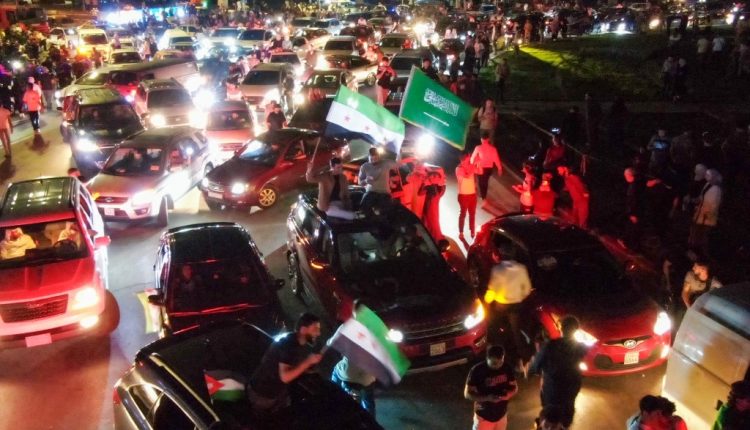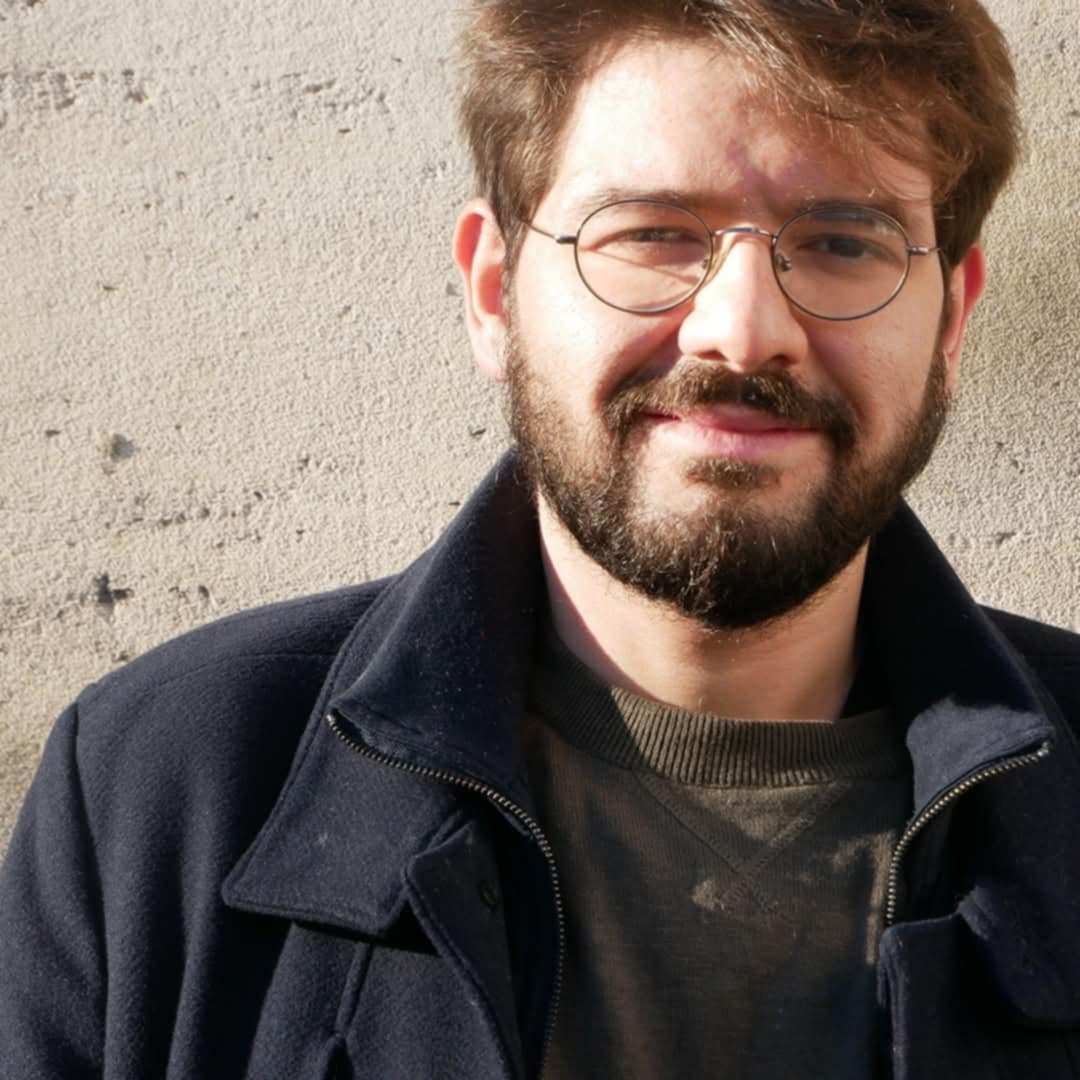Integrated Factions… The State or ‘General Mobilization’?
By Mohammad Sami Al-Kaylal
Syrian politics today is based on a concept of fait accompli whose actual consequences are difficult to comprehend. It seems that the various parties in Syria have been convinced that the so-called new administration in Damascus has sufficient regional and international support for its survival. Therefore, it is not wise to radically oppose it, but rather to work with it towards building a state, whatever its style and regime, and then ‘work from within’ to extract as many rights and freedoms as possible, including national and ethnic recognition, as in the case of the Kurds and Druze; mitigate attacks on minorities, especially the Alawite minority; achieve some participation in issues such as transitional justice in the case of activists who tend to describe themselves as civil society; and appeal to the authority for some social and religious tolerance to avoid reaching an Afghan state of affairs.
This horizon appears extremely impoverished. Describing it as ‘political’ is highly problematic. It diminishes the concept to the level of ‘humour’ and ‘sultanic etiquette’. In other words, action in the public sphere is confined to attempts at minimal bargaining with the dominant power through a kind of deceptive interaction that includes tricks, begging, and double-speak. These bargains are mostly oral and unspoken, rarely codified as rights or rules within any organized and comprehensive framework that can be referenced. Meanwhile, criticism becomes a form of advice to the ruler, a plea for him to modify certain behaviors and procedures out of concern for him and his rule.
For ‘politics’ to deserve that name, it requires the presence of forces with a clear understanding of the collective self—its autonomy, independence, differences, rights, and interests—as well as well-defined, measurable projects; an effort to frame the balance of power within a codified, normative framework—even if the ultimate goal is to alter these balances in the medium and long term; and the capacity to reject and effectively protest repressive, monopolistic measures, rather than just justify, beautify, or merely appeal for their change—actions that cement the unilateral nature of authority and unconditional submission to it.
Certainly, there is no politics without ‘subtlety’. But restricting it to that and making it the totality of practices related to public affairs leads us into a sub-political condition. This brings us back to the well-known distinction between the original Arabic root of the word ‘politics’ (which relates to shepherding, leading, commissioning, commanding, and prohibiting) and the Greek origin of the term (pertaining to city affairs). Perhaps it is from this distinction that we should begin to understand the nature of power in Syria and its opponents—or, more accurately, the practitioners of ‘sultanic etiquette’ within the country.
Perhaps the most important question is: Is it realistically possible to rely on the de facto powers in Syria—under the guise of ‘sub-political’ strategies—to build a state and then reduce their tendency toward tyranny and unilateralism through appeals? The answer again requires distancing ourselves from clichés and the rhetoric they entail, and instead examining the actual, measurable, and analyzable facts and actions taken by the ruling authorities. This also involves attempting to characterize the structure of these authorities themselves.
The de facto authorities, which have not yet reached the stage of a full regime, can be summarized by a number of actions and realities, most notably: the overall framework of governance and its legitimacy (the Victory Conference, national dialogue, constitutional declaration, expanded government); the nature of the effective forces and institutions that form the core of their executive power (factions—both ‘uncontrolled’ and controlled; sovereign ministries; administrative bodies); and the primary mechanisms of exercising power through violence and ideological hegemony (‘general mobilization,’ as seen in the Coast massacres, proselytizing efforts, and the foundational narrative of governance).
All these actions and realities do not, as of now, point to any logic of the state, even by Middle Eastern standards. Many are betting on the possibility that future developments—such as integrating factions, establishing governance structures, and undertaking reconstruction—might lead in that direction. This hope is especially fueled by claims of widespread international pressure on the current authorities, which they cannot afford to ignore if they wish to survive and maintain their grip.
International pressure, however, cannot materialize out of thin air; it also interacts with existing facts and structures on the ground. Therefore, returning to the mechanisms, power, and frameworks at play may be the most effective way to understand the current governance in Syria and its potential trajectories.
The Structure of ‘The General Mobilization’
The ‘general mobilization’ on March 6 and 7, 2025, can be considered a foundational moment for the new authority. Under the orders of ‘Minister of Defense’ Marhaf Abu Qusra and ‘Chief of Staff’ Ali Noureddine Naasan, calls for jihad were broadcast from a series of mosques across many Syrian provinces. Subsequently, numerous militias rushed toward the Syrian coast, taking full control of it, and then carried out revenge operations against civilians that can only be described as war crimes, within a broader context of sectarian/ethnic targeting that may amount to genocide.
The ‘Mobilization’ mechanism achieved rapid military gains for the ruling power, benefiting from a flexible ‘infrastructure,’ so to speak: dozens of mosques distributed throughout cities and towns, factions, and even enthusiastic individuals who could be mobilized and directed quickly against an internal enemy. Defeating this enemy did not require much military technology or strategy. In this type of conflict, and against this kind of foe, ‘Mobilization’ proves to be an ideal mechanism.
However, the flexibility of ‘Mobilization’ extends beyond the battlefield. It may also be an expression of the entire new power structure—or at least the mindset that the authorities have so far been comfortable with and capable of acting according to: organizations that are flexible, not governed by codified laws, strict bureaucratic procedures, or traditional institutions, but united by a single ‘spirit’ built on complex, unwritten relationships of loyalty and dependence. Additionally, there is a broad ideological allegiance that is less concerned with precise legal or religious details and more focused on defending a particular identity, including protecting its rule and rallying around its ‘grievances.’
This flexibility grants significant capacities for mass mobilization, alliance-building, distribution of gains and privileges, and dispute resolution—without the need for a series of rigid, formal organizational structures. Such structures would not only hinder the movement of the coalition of factions but could also fundamentally alter its nature, risking the loss of many of its gains and the displacement of its key figures.
If the model of field mobilisation embodied by ‘Nafir’ is the quintessential expression of the militias’ nature of authority, we can observe similar models in other domains, such as the economy. During its control over Idlib, Hay’at Tahrir al-Sham (HTS) managed key sectors, including energy, services, and finance, through a network of ‘private’ companies operated by HTS members and close associates. This created a kind of ‘authoritarian sector’ that monopolizes essential economic activities based on the loyalty and dependency relationships mentioned earlier, operating outside the framework of any reliable laws, legislation, or oversight. These companies can be expropriated, dissolved, and their managers punished if they are no longer needed or if corruption reaches a provocative level.
The monopoly is not merely an economic benefit for the organization and its members; it also secures its dominance. This model could be decisive in the future reconstruction of Syria, especially with the expected influx of aid following the partial suspension of sanctions. Its flexibility would enable comprehensive control over all forms of investment and contracts with foreign companies.
The current authorities have already signed major deals with French, Emirati, and Chinese parties without bureaucratic hurdles, within any traceable legal framework, or the involvement of legislative or oversight bodies. These agreements are solely driven by the will of the ruling authority and its own definition of its interests.
The same applies to appointments, whether in military, administrative, or even political positions. Despite the repeated discourse about technocracy and governance, we are already witnessing the appointment of semi-literate militia commanders as generals within the ‘Syrian Army,’ and officials who appear closer to ‘princes’ and ‘sharia’ authorities heading some of the most important institutions, such as the Ministry of Justice. All these appointments resemble factional quotas that strip institutions of their remaining procedural and specialized content, in favor of a kind of flexibility capable of consolidating such a form of authority—and ‘resisting’ change when necessary.
This flexible structure may prove harmful in the long term to the new regime, even if it guarantees a certain degree of field efficiency. It will hinder the development of any state-form and its monopoly on violence, reducing it to a coalition of militias, which increases chaos, assaults, and sectarian crimes. It also prevents serious investments, bypasses mortgaged state assets (ports, land, free zones, and remaining basic infrastructure), and embarrasses the Damascus rulers before their regional allies. Can such an authority transcend its fundamental framework to establish strong governance?
Building a ‘Political Coalition’
There is a prevalent notion that the ruling authority, particularly its leader Abu Mohammad al-Joulani (Ahmad al-Sharaa), intends to transcend its militia and jihadist character by exerting control over factions, integrating them into state institutions, and possibly removing some of their leaders. The issue of foreign jihadists is also expected to be addressed by sidelining them from leadership roles and assimilating them into Syrian society. Additionally, the anticipated financial support from regional allies will compel the new leadership to adopt governance measures, establish reliable institutions, and grant some essential freedoms in investment and tourism sectors. Furthermore, integrating governance into the international system might push it to involve segments of the Syrian population in decision-making and to implement agreements with the Syrian Democratic Forces (SDF), contributing to a less centralized and more participatory state.
However, there is no concrete evidence to confirm such intentions. From the appointment of al-Joulani as president through the ‘Victory Conference’ convened by the factions—an act that can be seen as a form of ‘factional legitimacy’—to the ‘Constitutional Declaration’ that centralized all authority in the hands of the president; to recent appointments in the ‘Ministry of Interior’ and the hurried promotion of officers of a single faction to lead ‘internal security’ in various provinces; and to the division of the Syrian territory into security and military ‘districts’ modeled after old Jabhat al-Nusra practices, the actions of the authorities are very transparent.
The coalition and factional quota system has become unmistakably evident in the security institutions. The Ministry of Interior has become the main domain of Hay’at Tahrir al-Sham, while the Ministry of Defense is chiefly controlled by other factions, including the factions of the ‘National Army’ and foreign jihadist groups. Outside the security and military frameworks—which are the most crucial in any Middle Eastern governance—we can observe similar patterns of alliances and quota-sharing arrangements in other sectors. However, these arrangements are often undermined by the superficial inclusion of some civilian figures as mere façade or decoration for the new regime.
Furthermore, the regime’s statements regarding the agreement with the Syrian Democratic Forces (SDF), especially in meetings between their representatives and the Turkish side, do not indicate any acknowledgment of the principle of decentralization and autonomous administrations.
For the authority to move beyond its militia character, it must transition from a ‘factional coalition’ to building a political majority. This involves establishing social coalitions outside the factional framework that not only create space for political participation but also enable various groups to benefit from the proceeds of any future reconstruction. Additionally, it requires the creation of administrative, social, and cultural institutions that facilitate their integration into the new system in a manner appropriate to their status, thereby contributing to transforming them into the ‘people’ of the state.
None of this has materialized, nor are there any signs indicating it will. The authority has already established a structure that allows it to monopolize all available power and revenues, distributing gains to its loyalists after assigning them within a hierarchical, factional, and regional framework. All of this will form, within the central authority, a pattern of ‘alienating power’ that pushes those who do not benefit—who are the majority—toward the periphery, whether through self-isolation or rebellion.
This approach cannot serve as a basis for building any type of state; instead, it will entrench the militia state as the most viable method for Syria’s new rulers.
The Disruption of ‘Social Integration’
‘Social integration’ is one of the most vital functions of any contemporary state. In complex and modern societies, reliance on traditional patriarchal or ‘organic’ structures—sometimes described as ‘membership-based’—to provide direction and patterns of legal, moral, and political commitment among diverse individuals and groups is no longer sufficient. Instead, a comprehensive network of intermediary institutions must be established at all levels and across various sectors to regulate communication channels and behavioral frameworks among the different segments of society.
In Hafez al-Assad’s regime, despite its brutality and repression, the regime built institutions resembling this model, albeit with third-world standards and based on the principle of ‘people’s democracy’ imported from some Eastern Bloc countries, with local modifications. Accordingly, many groups—particularly peasant and semi-peasant classes—were integrated into the Baath state through a series of party, trade union, educational, and cultural institutions. The expansion of volunteerism and conscription within security and military institutions also contributed to this ‘integration’ within a near-totalitarian security state.
The Assad regime forged a social majority—presented as the ‘Syrian Arab people’—which effectively dismantled the dominance of certain old social classes, excluded various social components, and pushed them into a ‘minority’ status, most notably the Kurdish population in Syria.
The Assad state was characterized by a hierarchical clustering of power, with relationships of loyalty, dependence, and a specific distribution of gains, resources, rents, and authorities. However, this was all maintained under a trans-sectarian discourse based on Arab nationalism, resistance to colonialism, and the Palestinian cause. The regime remained strong as long as its institutions persisted and its rhetoric dominated the Arab context. The decline of these institutions and the state’s inability to continue providing support to its core social classes and integrating them into its bloated apparatus led to the collapse of the entire Assad/Baathist model and the country’s descent into a civil war that continues to this day.
The new regime in Syria does not appear concerned with, nor capable of understanding, the function of social integration. Instead, it operates from a kind of subordinate institutional perspective—if one can call it that—focused primarily on satisfying loyalists and followers, and establishing a security system that ensures control over disadvantaged groups and crushes any potential rebellion. In terms of discourse, this regime cannot escape its foundational myths, chiefly ‘majority rule,’ ‘the Syrian revolution against Alawite minority rule,’ and ‘Sunni grievances,’ which it propagates through a network of influencers and activists. All these myths are overtly sectarian in nature, marginalizing large segments of society—not only religious and ethnic minorities but even the Sunni Arab majority—who are to be ranked and categorized according to their supposed role in the ‘revolution’ and what they have contributed to it. Many of these groups will find it difficult to identify with the totalitarian images of ‘Sunni Muslims’ imposed by the new regime.
Ultimately, we are likely to see the emergence of a militia-based, rural, ideologically Islamist coalition that will not succeed in becoming a ‘majority’ or in representing ‘the people’ as a whole.
All this will not make Syria a state. In this context, relying on Western conditions will not help. They are mainly related to some security demands that mitigate Syria’s damage to its neighbourhood, secure spheres of influence for competing regional states, and allow the issue of cross-border jihad to be managed and recycled within Syrian borders with the least possible losses. The nature of governance is not on the list of Western concerns, as long as the ruling militia coalition succeeds in fulfilling the functions required of it.
The nature of governance, its structure and procedures will remain a Syrian affair. Perhaps Syrians should reflect on their fate under such an authority, and seek, as far as possible, to minimise its harm to them and find prospects for self-protection and perhaps a political transition towards statehood. This is likely to be possible only by actively pursuing democratic change, even if many of the former Arab Spring elites have come to regard it as an old-fashioned trend.




Comments are closed.